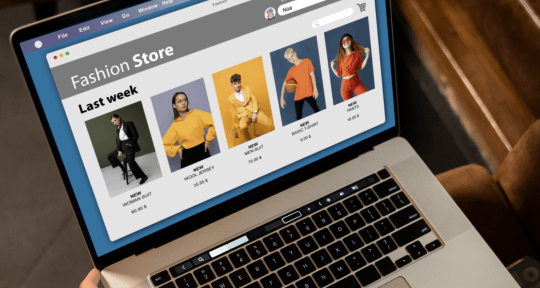
Difference between B2B and B2C e Commerce
The manufacturer of computer components sells his products online to computer manufacturers. Here, one company sells the product to another company online and hence it is called B2B. When a computer showroom sells online the computer to an individual customer it is B2C. So, when organizations sell products or services to various businesses over the internet, it is businesses – to – businesses and is referred as B2B e Commerce business model. The businesses – to – individual consumers over internet business model is referred as B2C e Commerce.
Amazon and Walmart are two typical examples of B2C since both the companies sell the products to individual consumers. When Apple buys computer chips from Micron Technology for manufacturing Smartphones, it is B2B e Commerce. In B2B e Commerce, products or services are sold to businesses who resell their products whereas in B2C the product or service is sold directly to the end consumer.

When compared to B2C, B2B is more complex
B2B e Commerce is more complex than the B2C model due to following reasons :-
1. B2C need not consult anybody regarding the purchase whereas the B2B buyer has to consult various departments of the organization.
2. B2C buying is more or less driven by impulse or emotion whereas B2B buying requires researching and sourcing. B2B buying is long term based.
3. The B2B buyer can’t afford errors in the deal since he makes high-value purchases. The impact of errors in B2C buying are negligible.
4. B2B purchases are periodic or repeated so that the buyer’s lifecycle is longer. In most of the cases the B2C buyer will purchase the product only once.
5. The B2B buyer takes the purchase decisions on behalf of the entire organization and consequently he has tighter remit when compared to B2C buyer.
B2B eCommerce Vs B2C e Commerce
The following features must be considered while differentiating B2B and B2C.
1. The Customers
The e Commerce sites that carries out B2B business are visited by purchase personnel of large organizations. After procuring the goods and services, the organization will sell them to the end consumers. Managers, middlemen, agents, marketing personnel, etc. are involved in the B2B business. Purchase Department of the B2B buyer always take logical decisions strictly based on the expected requirements and other possibilities of the company. Since the procurement process is carried out by multiple people, negotiations and customizations are essential in B2B buying.
The B2C e Commerce site sells directly to the individual customer. Individual buyers who search for products for their personal needs or needs of their family members or other relatives or friends buy the products online from B2C sites. The decisions of B2B buyers are often based on individual tastes and preferences, likes and dislikes and individual emotions. B2C buyers are comfortable with an intuitive website. The seller has to provide correct information and clear instruction. The B2C selling process is not much labor-intensive.
The sales processes in B2B and B2C are different and the reasons for the purchases are also different. Proper understanding of customer needs is important for both the business models.
2. Type of Products
B2B online stores are in niche market. Their customers have specific requirements and the sellers have to fulfill those requirements. B2B buyers often place bulk orders since they need the products in large quantities.
B2C market is in fact a market of consumer products. Amazon online store is the typical example of a B2C market. The orders are small and will consist of limited number of items and sometimes a single item. However, the range of products will be very wide. It can be any item required by members of a family or by a single individual.
3. Pricing
B2B prices vary according to the size of orders. So, B2B sites have variable pricing models. Since prices in B2B sites are negotiable, the sellers may not show their prices up front on the web page. The buyer can access the pricing model meant for him once he logs into his account. Apart from customized prices for loyal customers, theB2B sites include the “Request a Quote” option and an automated pricing calculator that shows changes in prices according to size of order.
Prices in B2C sites are rather consistent. Customization of prices in B2C sites is made through coupons, discount sales and special offers. Apart from transparent and consistent pricing, B2C sites provide Upfront Pricing and also Fields on checkout pages to enter coupon codes.
4. Supporting Content
Product Supporting Content in B2B sites ensures the buyer a clear understanding of the product. A professional buyer can have first-hand information regarding the product when all important resources are shown upfront. Supporting Content of B2B sites include detailed buying guides, product-videos, blogs and articles, access to sales representative if needed and case studies on customer success stories.
B2C sites are visited by individual buyers who take decisions independently. They go through the reviews, see the color and appearance of the products, the designs, price and also see whether the product is according to their tastes and preferences. Apart from product reviews and ratings the B2C sites provide details of Discounts, high-resolution images, customer testimonials and review-videos and features and highlights of the products.
5. Homepages
Homepage of a B2B website will be clutter-free and will have simple design. The content will be highly informative so as to satisfy the buyers and images of the products also will be provided. Quick order system enable the buyers who know the exact product name to easily place their orders.
In B2C websites, the Homepage is intended to effect conversion of visitors into actual buyers. The flashy Homepage provides details regarding cash discounts, special offers, etc. The headlines will be tempting and creative and the Homepage as a whole will look vibrant.
6. Order Quantity
The B2B site shows parameter for MOQ (Minimum Order Quantity) with every product listed in the page. The “minimum order amount” will be specified which is required to complete the order. For the items that are sold in packages “quantity in multiples” will be shown.
As far as B2C websites are concerned, the maximum quantity threshold is required to place orders. An alert message will appear whenever the order exceeds the maximum value.
7. Payments
B2B buyers normally prefer pay on credit as they place either bulk orders or multiple orders within a short period. So B2B sites must be integrated with multiple solutions for transaction management so as to provide the buyers with multiple options for payments, credit limits, payment history, etc. Buyers will expect post-delivery payment facility.
In the case of B2C business, the payments are straightforward. Buyers will make direct payment either online or as cash-on-delivery.
8. Checkout
B2B clients normally place multiple orders and also they opt for specific payment methods. Hence their checkout process will be rather complicated. They will require live communication with the sales personnel instead of chatbot or online confirmation of the order. Since they will place repeat orders, sustained relations are essential. In order to provide them the best user experience and also to make the reordering process easier and faster, they must have unique accounts with saved details.
B2C buyers will not require registration, log in, etc. They always prefer a simple and easy-to-fill up checkout form that requires only basic information such as address details and delivery schedule. They never like to talk with the sales rep over phone and will expect a seamless purchasing on an intuitive website.
9. Shipping
B2B buyers place bulk orders and one-day delivery will not be possible. Hence apart from Standard Delivery, B2B sites have to provide other types of shipping options also such as LTL Freight Carrier and Warehouse Pickup.
Orders placed by B2C customers will be small in size. So the B2C sites have to provide commonly available different shipping options like Free shipping, Same-day delivery, One-day Delivery and In-store Pickup.
10. Customer Support
Both B2B and B2C sites must provide prompt and efficient customer support. The B2B website should have the provision for customer support options during checkout process, video chats and live chats to answer FAQs and after-sale customer support in case of reorders and complaints.
B2C websites must have provision for 24/7 customer support to give reply to inquiries, after-sale handling of complaints/returns/exchanges and chat-bots to answer simple queries.
Conclusion
All business websites including B2B and B2C must keep the ball rolling. The various solutions for online trading may be different for B2B portal development and B2C Portal Development. However, all customer-requirements must be taken into account and the businesses should come up with the best and the most efficient online facilities that ensure the customers fast and seamless online purchases.










At BRTECHNOSOFT, I am the lead technology director with 10+ years of experience in web development and design. I love to produce information based on research. I constantly look for original inspirations and capture them all to utilize in my blogs.